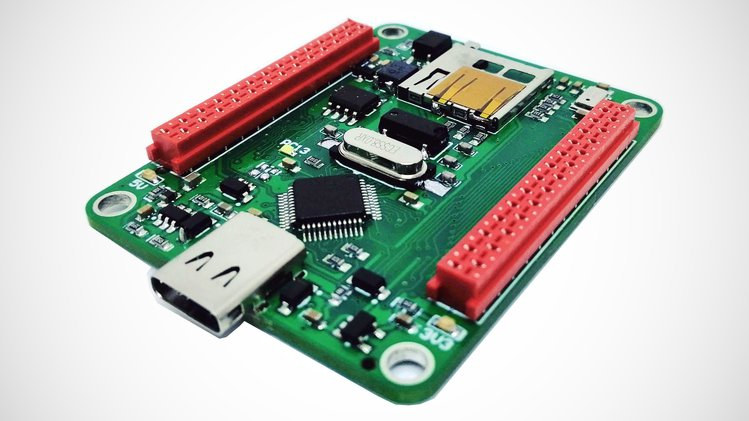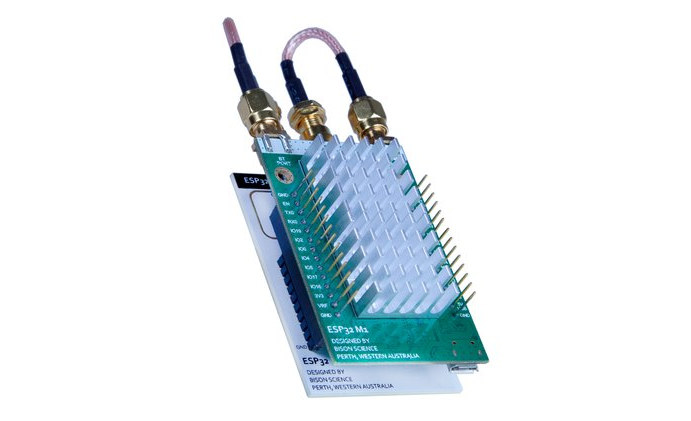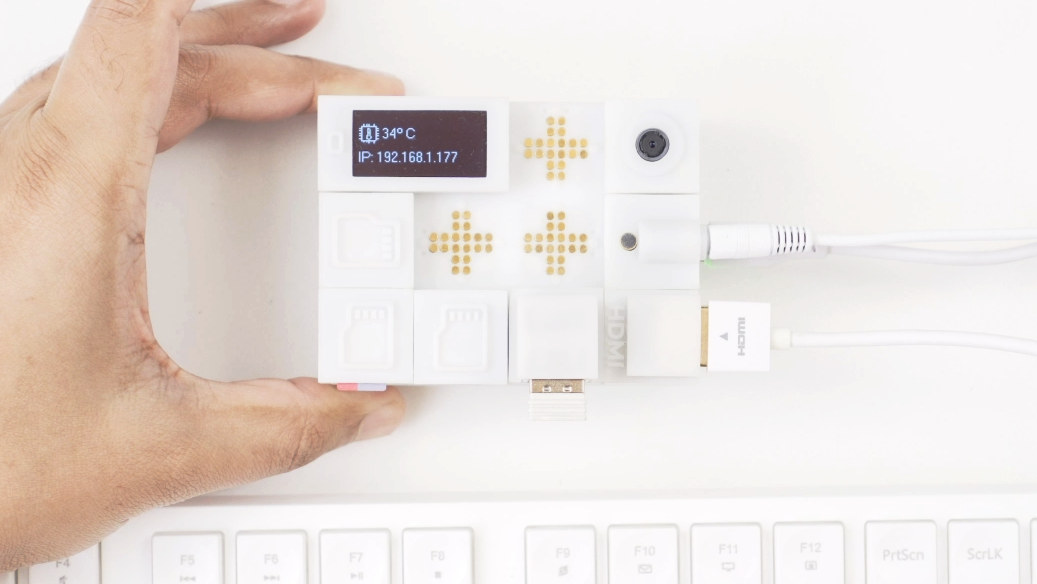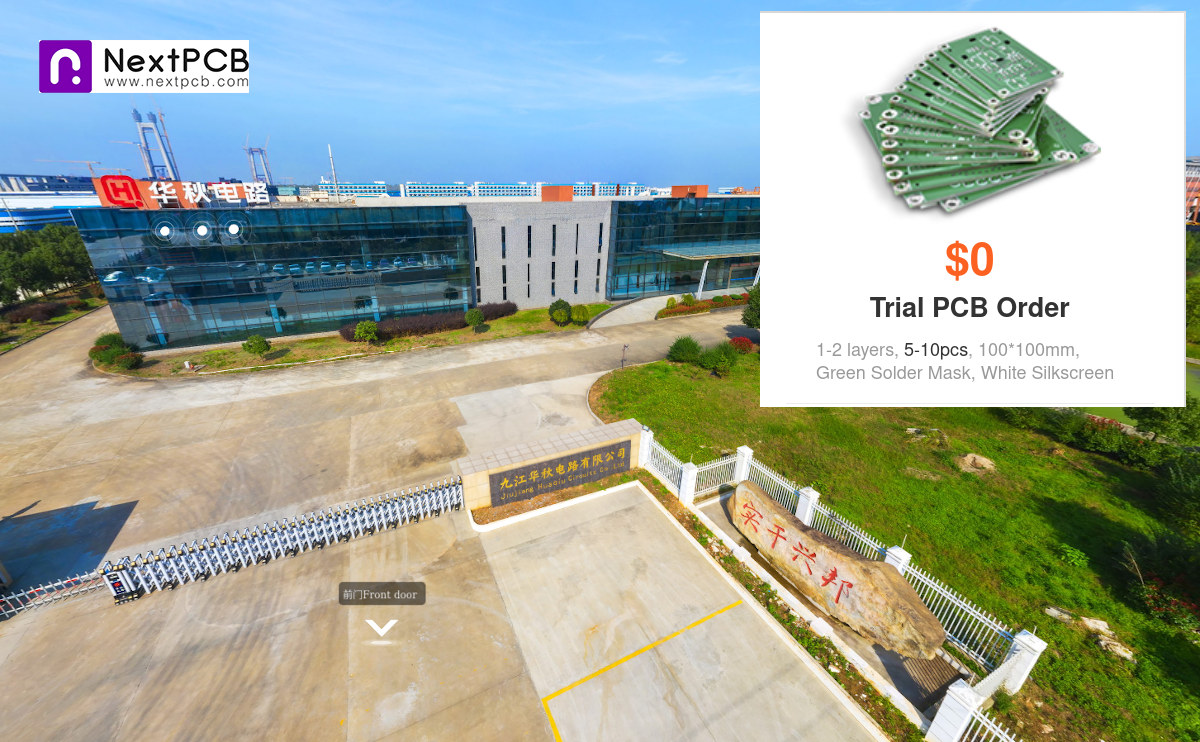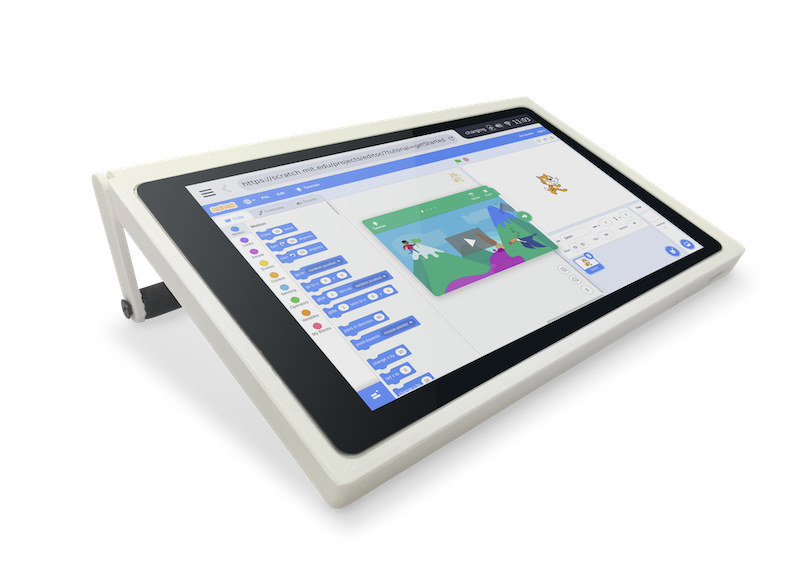If you are looking to connect to a vehicle’s CAN bus, then the newly launched open-source board::mini development tools include a board and expansion boards that will aid your application. BMC labs have introduced a development board based on the STM32 MCU and supporting expansion boards to increase the capabilities of the baseboard via a crowdfunding project. As mentioned earlier, the board:mini base development board features an STM32 MCU at its heart and comes with a CAN transceiver. For those who do not know what a CAN transceiver is, it just transmits and detects data on the CAN bus. The board:mini project also includes three expansion boards designed to fit on top of the base development board. The bmc::board project was born to produce development tools appropriate for both field- and industrial-prototyping work. These boards were not designed to sit on a workbench. We ourselves have a habit of strapping […]
Experiment with neurostimulation using NeuroStimDuino Arduino shield (Crowdfunding)
Neuralaxy’s NeuroStimDuino is an open-source Arduino shield that allows students, researchers, and hobbyists to study the effects of neurostimulation on muscle contraction easily and cheaply. What is Neurostimulation exactly? It works by applying short electrical pulses to the surface of the skin for the purpose of stimulating the underlying nerves and muscles. Neurostimulation has several uses including a treatment called Functional Electrical Stimulation (FES) therapy to help restore mobility in the paralyzed limb muscles of stroke victims and those who have suffered spinal cord injuries, and studies are being carried out to better understand how it can be leveraged for pain reduction and sensory feedback. NeuroStimDuino hardware specifications: MCU – Microchip dsPIC33F 16-bit microcontroller (40 MIPS) with 256 KB flash memory Two independent 2mm output jack per board with: Adjustable current output range – +/- 25 mA, resolution 250 µA/step Adjustable stimulation frequency range – 1 – 100 Hz, pulse-width […]
BLUETTI EP500 is a power bank & UPS for home appliances (Crowdfunding)
Many people are using a power bank to extend the battery life of their mobile device(s), and there are also laptop power banks which higher capacity and support for 12V and/or 19-20V besides the usual 5V. But BLUETTI EP500 & EP500Pro go up a notch as the systems aim at powering multiple home appliances or be used as UPS in case of power failure, or whenever you need to use tools or appliances away from the mains. BLUETTI EP500 & EP500Pro specifications: Control system based on Texas Instruments C2000 dual-core Arm+DSP real-time microcontroller AC Rated Power EP500 – 2000W (peak 4800W less than 500ms) EP500Pro – 3000W (peak 6000W less than 500ms) Power Input EP500 600W max, 100-264V AC via AC input – Charging time around 9 to 10 hours 1,200W max via PV input or T500 input (55-145V DC, 20A) – Charging time around 5 hours with solar panels […]
Station P2 Arm mini PC offers dual GbE, M.2 & SATA SSD, up to 8GB RAM (Crowdfunding)
Last week, we noted Firefly launched the first RK3568 system-on-module with Core-3568J AI Core and a corresponding full-featured development kit. But the company has been working on another interesting Rockchip RK3568 based device with Station P2 mini PC. Most Arm mini PCs need to make compromises when it comes to interfaces having to rely on USB bridges, but Station P2 feels very much like standard x86 based mini PC, albeit with a slower processor, thanks to native interfaces, or implemented through PCIe, with M.2 and SATA 3.0 SSD/HDD, dual Gigabit Ethernet, as well as WiFi 6, several USB 3.0/2.0 ports, and support for up to 8GB RAM among other features. Station P2 mini PC specifications: SoC – Rockchip RK3568 quad-core Cortex-A55 processor @ up to 2.0 GHz with Arm Mali-G52 2EE GPU with support for OpenGL ES 1.1/2.0/3.2, OpenCL 2.0, Vulkan 1.1, 0.8 TOPS NPU for AI acceleration, 4Kp60 H.265/H.264/VP9 […]
Long range ESP32 Wi-Fi development board promises up to 1.2km range (Crowdfunding)
WiFi is not really designed for kilometer range transmission, but CNLohr previously demonstrated 1km range with ESP8266, and some directional antennas are sold to expand the WiFi range. Bison Science’s ESP32-M1 Reach Out WiFi development board has been specifically designed for long-range connectivity with up to 30 dBm (1W) transmit power and support for various types of antennas for a 1.2-kilometer range, even tested up to 1.5km in a clear day. ESP32-M1 Reach Out features and specifications: WiSoC – Espressif Systems ESP32-D0WDQ6 dual-core processor @ 240 MHz Storage – 32 Mbit flash Connectivity 2.4 GHz Wi-Fi 4 802.11 b/g/n Bluetooth 4.2/5.x Classic and Bluetooth Low Energy (BLE) QPF4219 PA (Power Amplifier) and LNA (Low Noise Amplifier) Wi-Fi RF front end (RFFE) from Qorvo with 33 dB PA gain and 15 dB LNA gain Wi-Fi transmit output power adjustable from 21 to 30 dBm (1 W) conducted Wi-Fi front end bypass […]
Pockit modular Linux computer takes hot plugging magnetic blocks
There have been attempts to create modular computers and smartphones to reduce electronics waste and improve user-serviceability over the years with initiatives and products like Google Project Ara, PinePhone and Fairphone3 smartphones, DevTerm mini computer, Olimex TERES-I laptop, and many more. Here’s another modular computer project that looks really cool. Pickit modular computer is comprised of an STM32+ESP32 based mainboard with a socket for an optional Raspberry Pi Compute Module 3. The board includes magnets and electrical contacts to snap and hot-plug modules/blocks while the computer is running. The video demo embedded further below, is really impressive, but let’s check out Pockit preliminary specifications first: MCU – STMicro STM32 microcontroller Wireless MCU – ESP32 dual-core processor with WiFi and Bluetooth LE CPU module – Socket for Raspberry Pi Compute Module 3 Expansion 24+ feature BLOCKS ready to use with instant connection using magnetic-snaps including Ethernet, Display (HDMI), audio, sensor modules […]
NextPCB offers free PCB prototypes for first order (sponsored)
Shenzhen Huaqiu Electronics Co., Ltd, better known as NextPCB, is a PCB manufacturer with multiple factories in China that has been in business for over 15 years. The headquarter of the company is however located in Paris, France, under a company called NOVA SILK ROAD SARL, but most operations are managed in China from the branch office in Shenzhen, and the company operates three plants all certified by IATF16949, ISO9001, ISO14001, UL, CQC, RoHS and REACH: A PCB prototype factory in Bao‘an District, Shenzhen, Guangdong A PCB mass manufacturing factory in Xigang District, Jiujiang Economic Development Zone, Jiujiang City, Jiangxi Province A PCB assembly plant in Dongguan City, Guangdong Province, China. The prototype factory always for fast turnaround for prototype, while the mass manufacturing factory targets higher volume production with further lower costs. Beyond just making PCBs, the assembly plant works on soldering BGA, Micro-BGA, QFN, and other components to […]
CutiePi tablet gets a Raspberry Pi CM4 upgrade
CutiePi tablet was launched on Kickstarter last year with a Raspberry Pi Compute Module 3+ Lite, an open-source hardware carrier board, and an 8-inch multi-touch display with 1280×800 resolution. Shipping to backers is about to start, but the company has already started working on a new version of the CutiePi Tablet with the Raspberry Pi CM4 module released last October. This will enable greater performance and more memory with the tablet shipping with a 2GB RAM CM4 module by default. CutiePi CM4 tablet preliminary specifications: SoM – Raspberry Pi Compute Module 4 Lite with Broadcom BCM2711 quad-core Cortex-A72 processor @ 1.5 GHz, 2GB RAM Storage – MicroSD card slot Display – 8-inch 5-point multi-touch IPS LCD with 1280×800 resolution Video Output – Micro HDMI Audio – 2W 8Ohm speaker, audio amplifier, built-in microphone Camera – 5MP front-facing camera (OV5647) Connectivity – Dual-band 802.11 b/g/n/ac WiFi 5 and Bluetooth 5.0 USB […]


